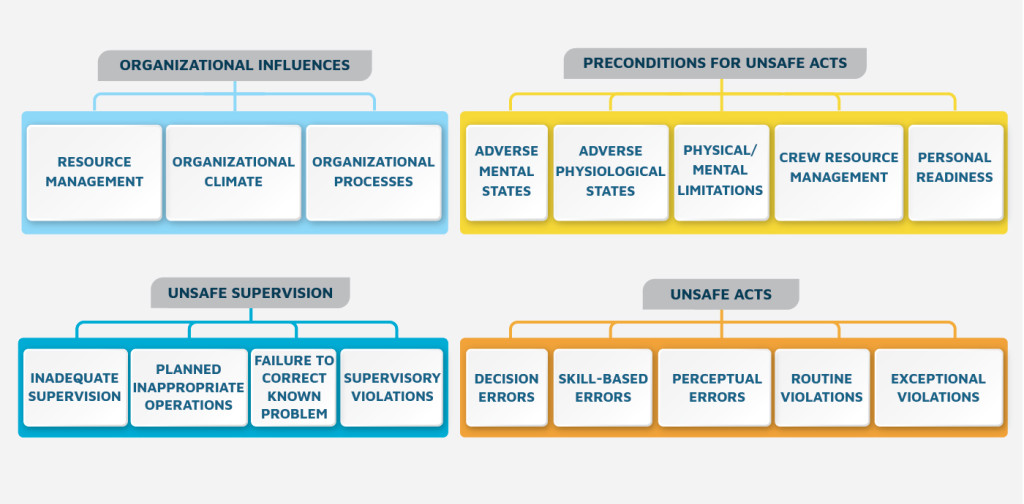Sofema Aviation Services (www.sassofia.com) considers the HFACS Framework.
Introduction
Spurred by increasing problems with human performance, the Human Factors Analysis and Classification System (HFACS) was developed by behavioural scientists in the United States Navy.
Messer’s Wiegmann and Shappell referenced James Reasons Swiss-cheese model of accident causation. The goal of HFACS is not to attribute blame, rather to understand the underlying causal factors that lead to an accident.
The Swiss-cheese model provides for a “systems” approach to accident investigation where human error is viewed as a symptom of a larger problem in the organization, rather than the cause of the accident. Moreover, by creating barriers within the organisation it is possible to prevent adverse events.
By using HFACS, an organization can compare events both in terms of psychological origins of the unsafe acts, as well as any latent conditions which exist within the organization. To understand where hazards have arisen historically and to implement behaviours leading to improved human performance and decreased accident and injury rates.
Swiss Cheese Considerations
Multiple levels of barriers potentially exist within an organisation and at each level, failures can cause holes in safety barriers.
- These failures can either be active (those occurring immediately prior to an accident and directly impacting events) or
- Latent, those currently isolated or removed (possibly temporarily) from the event and therefore not exhibiting a direct impact
The Human Factors Analysis and Classification System – HFACS Framework
Within each level of HFACS, causal categories were developed that identify the active and latent failures that occur.
Note : In theory, at least one failure will occur at each level leading to an adverse event and if at any time leading up to the adverse event, one of the failures is corrected, the adverse event will be prevented.
Using the HFACS framework as a guide, it is possible to systematically identify active and latent failures within an organization that may potentially impact a specific exposure.
Using HFACS to Identify Trends
Using the HFACS framework enabled the understanding that a significant level of incidents & accidents were associated with routine violations. With this understanding, it becomes possible to develop mitigations and interventions that both reduce the immediate impact of accidents associated with violations, as well as providing a sustained reduction over time.
When events are broken down into the underlying causal factors, it is then that common trends within an organization can be identified.
Sofema Aviation Services & Sofema Online provide EASA Compliant Regulatory & Vocational Training including Quality & Safety Assurance and Root Cause Analysis Techniques. Please see the websites or email team@sassofia.com
Tags:
Human Error, Human Factors, Risk Management, Safety Risk, HFACS, Swiss Cheese Model





